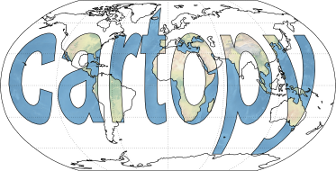Note
Go to the end to download the full example code.
Map tile acquisition#
Demonstrates cartopy’s ability to draw map tiles which are downloaded on demand from the Google tile server. Internally these tiles are then combined into a single image and displayed in the cartopy GeoAxes.

import matplotlib.pyplot as plt
from matplotlib.transforms import offset_copy
import cartopy.crs as ccrs
import cartopy.io.img_tiles as cimgt
def main():
# Create a background image tile.
google_terrain = cimgt.GoogleTiles(style="satellite")
fig = plt.figure()
# Create a GeoAxes in the tile's projection.
ax = fig.add_subplot(1, 1, 1, projection=google_terrain.crs)
# Limit the extent of the map to a small longitude/latitude range.
ax.set_extent([-22, -15, 63, 65], crs=ccrs.Geodetic())
# Add the tile data at zoom level 8.
ax.add_image(google_terrain, 8)
# Add a marker for the Eyjafjallajökull volcano.
ax.plot(-19.613333, 63.62, marker='o', color='red', markersize=12,
alpha=0.7, transform=ccrs.Geodetic())
# Use the cartopy interface to create a matplotlib transform object
# for the Geodetic coordinate system. We will use this along with
# matplotlib's offset_copy function to define a coordinate system which
# translates the text by 25 pixels to the left.
geodetic_transform = ccrs.Geodetic()._as_mpl_transform(ax)
text_transform = offset_copy(geodetic_transform, units='dots', x=-25)
# Add text 25 pixels to the left of the volcano.
ax.text(-19.613333, 63.62, 'Eyjafjallajökull',
verticalalignment='center', horizontalalignment='right',
transform=text_transform,
bbox=dict(facecolor='sandybrown', alpha=0.5, boxstyle='round'))
plt.show()
if __name__ == '__main__':
main()
Total running time of the script: (0 minutes 0.293 seconds)
